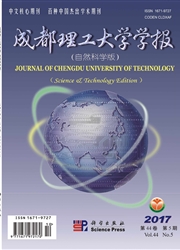

 中文摘要:
中文摘要:
分别采用不同的地层学方法对西藏贡扎地区的两条相邻上白垩统剖面进行了年代地层划分。根据将建立在贡扎Ⅰ上白垩统剖面上的锶同位素演化曲线与W.H.Burke等的同时代锶同位素演化曲线对比,剖面上岗巴村口组顶界年龄值约为81.4Ma;根据在贡扎Ⅱ剖面上划分出的12个浮游有孔虫化石带确定的岗巴村口组顶界年龄值约为67.0Ma。作者认为岗巴村口组顶界年龄值存在明显差别是受诸多因素影响,在对地层进行年代地层研究中,要不断提高各种地层学方法的分辨率,并尽可能采用综合的地层学方法。
 英文摘要:
英文摘要:
Two sections of Upper Cretaceous have been chronostratigraphically divided separately by different stratigraphic methods in Gongza of Gangba, Dingri, Tibet. The age of the top boundary of the Gangbacunkou Formation in Section Ⅰ is about 81.4 Ma based on the correlation between the Srisotopic curve set up in this section and the coeval curve set up by W. H. Burke et al(1982) in Western Interior USA. The age of this boundary in Section Ⅱ is about 67. 0 Ma based on 12 planketic foraminifera fossil zones. This paper points out that the obviious difference of the age of the top boundary of the Gangbacunkou Formation in the two adjacent sections was brought by several factors, and that the resolution of stratigraphical methods should be iraproved and a comprehensive method should be adopted in chronostrtigraphic division.
 同期刊论文项目
同期刊论文项目
 同项目期刊论文
同项目期刊论文
 期刊信息
期刊信息
